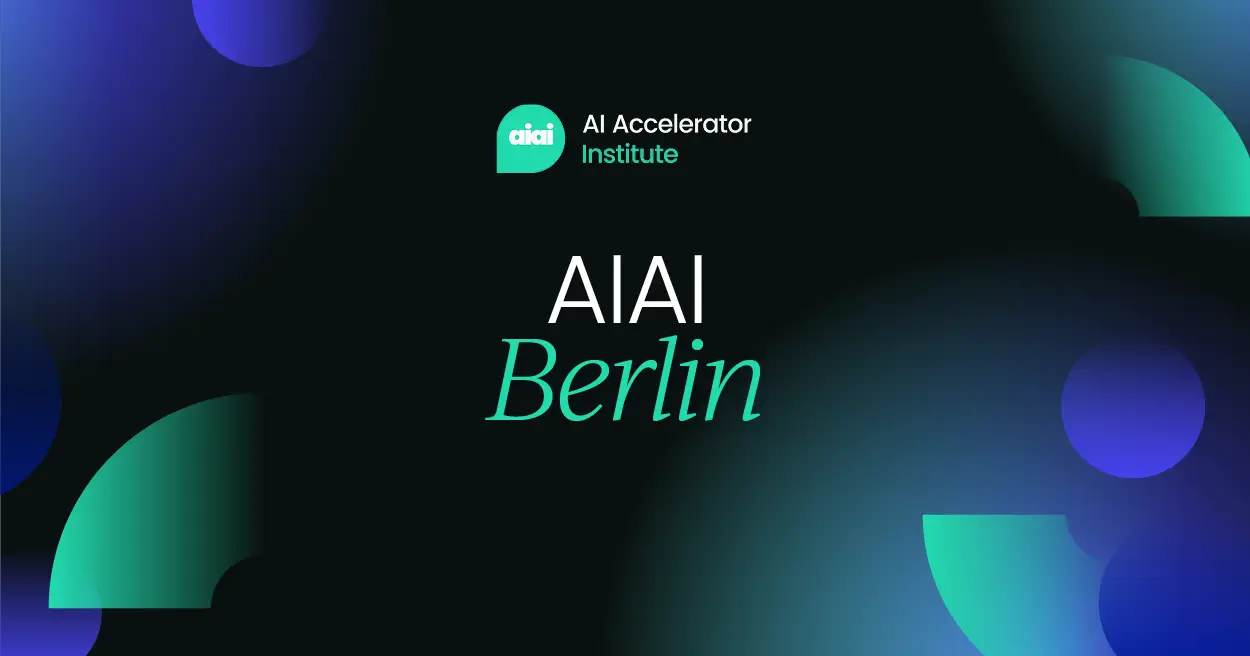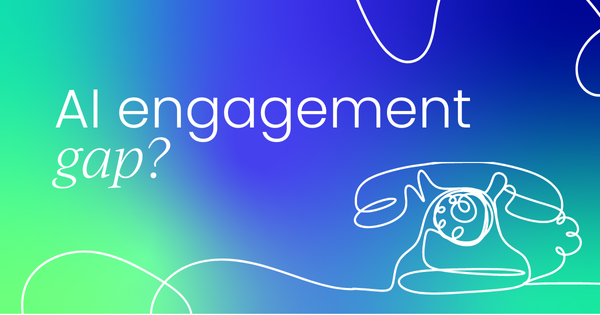AI has the potential to both widen and narrow the gap between employees and customers and ultimately cause brand impact, depending on how it is implemented and utilized within an organization. When I say widening the gap I am referencing interactions being dehumanized and overly robotic.
Factors that could widen the employee-customer gap
1. Overreliance on AI systems: If organizations become overly reliant on AI systems for customer interactions, it could lead to a lack of human touch and empathy, which customers often value in their experiences.
2. Impersonal interactions: AI-powered chatbots, virtual assistants, and automated response systems can sometimes provide generic or impersonal responses, which may not effectively address the specific needs and concerns of customers.
3. Data privacy and trust issues: Customers may have concerns about the privacy and security of their personal data when interacting with AI systems, which could create a sense of distrust and distance between them and the organization's employees.
Factors that could narrow the employee-customer gap
1. Enhanced customer insights: AI can analyze vast amounts of customer data, including behavior patterns, preferences, and feedback, providing employees with valuable insights to better understand and cater to customer needs.
2. Improved efficiency and responsiveness: AI-powered systems can automate routine tasks, freeing up employees to focus on more complex and personalized customer interactions, potentially improving response times and overall customer experience.
3. Personalized recommendations and experiences: AI can help organizations deliver personalized product recommendations, tailored marketing campaigns, and customized experiences based on individual customer preferences and behaviors.
4. Augmented employee capabilities: AI can augment employee skills and knowledge by providing them with real-time insights, recommendations, and decision-support tools, enhancing their ability to provide better customer service and support.
To ensure that AI narrows the employee-customer gap, organizations must strike a balance between leveraging AI capabilities and maintaining human involvement in customer interactions. Effective training, clear communication, and a customer-centric culture are crucial to ensure that AI is used as a tool to enhance the overall customer experience rather than creating a barrier between employees and customers.
The implementation of AI across various aspects of an organization's operations can have significant implications for both brand perception and customer perception. Here are some potential implications to consider:
Brand perception
1. Innovation and technological leadership: The use of AI can position a brand as innovative, forward-thinking, and at the forefront of technological advancements. This can enhance the brand's reputation and appeal, particularly among tech-savvy customers.
2. Efficiency and reliability: If AI is implemented effectively to streamline processes, improve response times, and enhance the overall customer experience, it can reinforce the brand's perception as efficient, reliable, and customer-centric.
3. Privacy and security concerns: Customers may have concerns about the privacy and security of their data when interacting with AI systems. If these concerns are not addressed transparently and effectively, it could damage the brand's reputation and erode customer trust.
customer-centric Some customers may perceive the widespread use of AI as a replacement for human interactions, which could negatively impact the brand's perception, particularly in sectors where personal connections are highly valued.
Customer perception
1. Personalization and customization: AI can enable organizations to deliver highly personalized experiences by analyzing customer data and tailoring products, services, and interactions accordingly. This can enhance customer perception and satisfaction.
2. Convenience and accessibility: AI-powered chatbots, virtual assistants, and self-service portals can improve customer convenience by providing 24/7 support and accessibility, potentially improving customer perception and loyalty.
3. Speed and efficiency: AI can streamline processes and automate tasks, leading to faster response times and more efficient service delivery. This can positively impact customer perception, especially in industries where speed and efficiency are highly valued.
4. Consistency and quality: AI systems can help ensure consistent and high-quality customer experiences by standardizing processes and reducing human errors. However, if not implemented correctly, AI could also introduce new inconsistencies or errors, negatively affecting customer perception.
5. Privacy and trust concerns: Customers may have concerns about the use of their data by AI systems, particularly if they perceive a lack of transparency or control over how their information is used. This could erode customer trust and negatively impact their perception of the brand.
To mitigate potential negative implications and leverage the benefits of AI, organizations should:
1. Clearly communicate their AI strategies and policies to customers, addressing privacy and security concerns transparently.
2. Implement robust data governance and ethical AI practices to build trust and maintain customer privacy.
3. Ensure AI systems are designed with a human-centric approach, maintaining a balance between automation and human interaction where appropriate.
4. Continuously monitor customer feedback and adapt AI implementations to address any emerging concerns or perception issues. By proactively addressing potential brand and customer perception implications, organizations can effectively harness the power of AI while maintaining a positive brand image and fostering customer trust and loyalty.
Creating a comprehensive marketing plan for the rollout of AI across your organization requires a strategic approach that addresses both internal and external stakeholders. Here are some thoughts:
1. Define your AI strategy and objectives: Clearly articulate your organization's vision and goals for implementing AI solutions. Identify the specific areas or processes where AI will be deployed and the expected benefits (e.g., improved efficiency, enhanced customer experience, cost savings).
2. Conduct an internal assessment: Evaluate your organization's readiness for AI adoption, including infrastructure, data availability, and employee skills. - Identify potential challenges or resistance points that may arise during the rollout. Develop a change management plan to address concerns and facilitate a smooth transition.
3. Develop a communication plan: Craft clear and compelling messaging that highlights the benefits of AI while addressing potential concerns about job security, data privacy, and ethical considerations. Create a range of communication materials (presentations, videos, infographics) tailored to different audiences (employees, customers, partners, investors). Establish a cadence for regular updates and progress reports throughout the rollout.
4. Build an internal AI ambassador program: Identify influential employees across different departments or teams to act as AI ambassadors. Provide comprehensive training and resources to these ambassadors, equipping them with the knowledge and skills to evangelize AI within the organization. Leverage their influence and credibility to build excitement and buy-in among their peers.
5. Develop a customer education and engagement strategy: Create educational content (blog posts, whitepapers, webinars) to help customers understand the role of AI in enhancing their experiences. Organize customer events, demos, or roadshows to showcase AI capabilities and address any concerns or misconceptions. Encourage customer feedback and input to continuously improve the AI solutions and ensure they meet evolving needs.
6. Engage with industry influencers and thought leaders: Identify and collaborate with influential individuals or organizations in your industry who are respected voices in AI and emerging technologies. Invite them to contribute to your content, participate in events, or endorse your AI initiatives. Leverage their credibility and reach to build awareness and trust among your target audience.
7. Measure and optimize: Establish key performance indicators (KPIs) to track the success of your AI marketing efforts (e.g., website traffic, social media engagement, lead generation, customer satisfaction). Continuously monitor and analyze data to identify areas for improvement or adjustment. Incorporate customer and employee feedback to refine your messaging, content, and tactics as needed.
8. Celebrate milestones and successes: Recognize and showcase the achievements and positive impact of your AI rollout, both internally and externally. Share customer success stories, employee testimonials, and quantifiable results to reinforce the value of AI and maintain momentum.
By following this comprehensive approach, you can create a well-rounded marketing plan that builds awareness, generates excitement, and addresses potential concerns about the AI rollout across your organization. Remember to remain agile and adapt your plan as needed based on feedback and evolving market conditions.
Fancy meeting like-minded AI experts?
We'll be in Berlin
11-12 September 2024, with three co-located summits:
- Chief AI Officer Summit
- Generative AI Summit
- Computer Vision Summit
Join us!




 Follow us on LinkedIn
Follow us on LinkedIn



